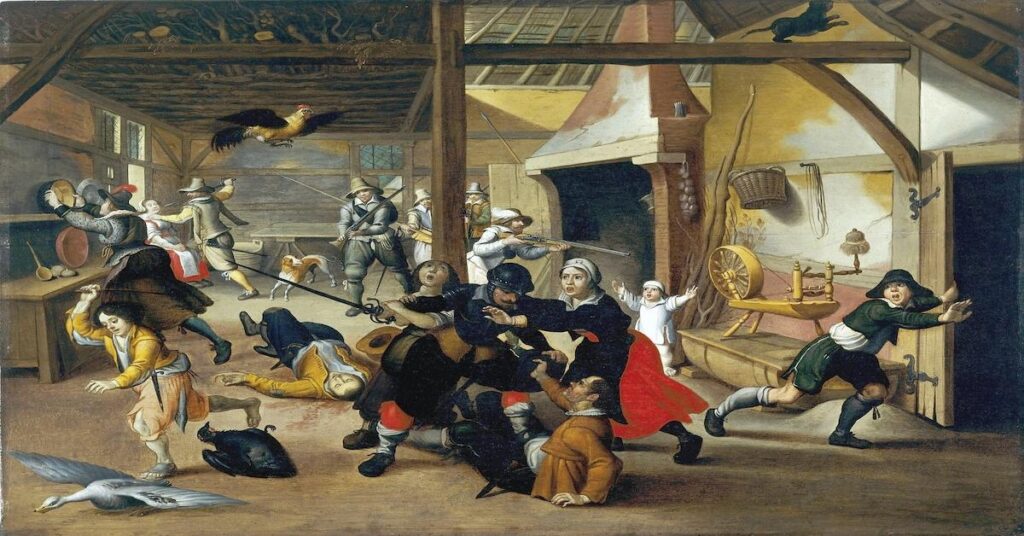What was the Thirty Years’ War?
Thirty Years War in European history, a progression of wars battled by different countries because of multiple factors, including strict, dynastic, regional, and business contentions. Its damaging efforts and fights happened over the vast majority of Europe.


Credits: worldhistory
When it finished with the Treaty of Westphalia in 1648, the guide of Europe had been unalterably changed. Thirty Years’ War is by and large viewed as perhaps the most disastrous conflict in European history. An expected 4.5 to 8 million warriors and regular citizens passed on as an immediate outcome.
History of Thirty Years War:
This war was a progression of strict European struggles between the Catholics and Protestants. The primitive Holy Roman Empire involved nations or portions of nations like the Netherlands, Germany, Belgium, Austria, France, Luxembourg, Poland, Italy, Switzerland, Slovenia, Slovak Republic, and the Czech Republic. The Thirty Years’ War started in 1618 over strict opportunities.
However, later formed into a political battle. It included Austria and Spain, which rehearsed Catholicism. The Protestant religion included Reform, Lutheran, Hussite, and Calvinists of England, the Dutch Republic, Sweden, France, and Denmark. In rundown, the thirty years of war went on until 1648 and is supposed to be the most disastrous and most drawn-out War in European history.
The Battle of Breitenfeld:
The Battle of Breitenfeld was battled in 1631 close to Leipzig, Germany, and was the primary critical loss of the Catholics and the principal huge triumph for the Protestants. The fight denoted an extensive time of the Thirty Years’ War since it guaranteed that the Protestants were not generally compelled to change over completely to Catholicism. Besides, Sweden arose as a superpower.
Its strategies over the infantry development had ruled fighting in Europe for quite a while. The mediation of the Swedish and French Army assisted the Protestants in accomplishing their triumph. Driven by the Swedish King Gustavus Adolphus, Protestants’ expectation was essentially supported because of his phenomenal abilities as a commandant. The conflict likewise named him an extraordinary and strategic pioneer.
The Protestants likewise revolted and looked for help from protestant countries like England, Sweden, Denmark, and the Dutch Republic to assist with overcoming the Catholics. In the wake of framing coalitions with Ferdinand II, the King of Bohemia, Spain, and Hungary upheld the Catholics.
Reasons for the Thirty Years’ War:
The Thirty Years War was a disastrous conflict with more than 8 million losses. The reasons for the Thirty Years’ War were predominantly the activities of Emperor Ferdinand II. He constrained protestant residents into Catholicism after his rise to the top of the Holy Roman Empire in 1619. He was a dedicated Catholic and had prejudiced characteristics.
Individuals dreaded the gamble of losing their strict privileges and opportunities. Head Ferdinand II additionally abused the strict freedoms of the Protestants in the Holy Roman Empire, which maddened them much. Also, different countries battled because of reasons other than strict, like business/exchange dynastic and regional worries.
The Peace of Westphalia:
The Peace of Westphalia helped end the Thirty Years’ War since it laid political and strict limits for Europe. It likewise gave terms that perceived regional sway inside the Empire, empowering the part nations to contract deals among themselves and with outsiders with no bias.
The powers of the King were additionally broken, and the grounds were allowed to decide and pick their resulting religions. Since Germany gave the milestones, it was crushed and fundamentally diminished the nation’s populace.
Impacts of the Thirty Years’ War:
The Thirty Years’ War gave the premise under which the Enlightenment bloomed. The Enlightenment was a philosophical development of the eighteenth century that ruled European thoughts and thinking. It was described by resilience, opportunity, progress, detachment of the state and church, and established parliament.
The Enlightenment held the fundamental thought that reason is the essential wellspring of authenticity and authority. Its items incorporate the detachment of basic freedoms, powers, common society, and social liberties.
These are the Impacts of the Thirty Years’ War.
Conclusion:
The Thirty Years’ War finished with the Treaty of Westphalia in 1648, which changed the guidance of Europe unalterably. The harmony was arranged, from 1644, in the Westphalian towns of Munster and Osnabruck. The Spanish-Dutch arrangement was endorsed on January 30, 1648, This is What was the Thirty Years’ War.
Start your reading goal right here and also educate yourselves in the technical aspects too. We have a tailored piece of content to make you feel at ease. Visit our article page- Calanjiyam
Credits: Tom Richey
